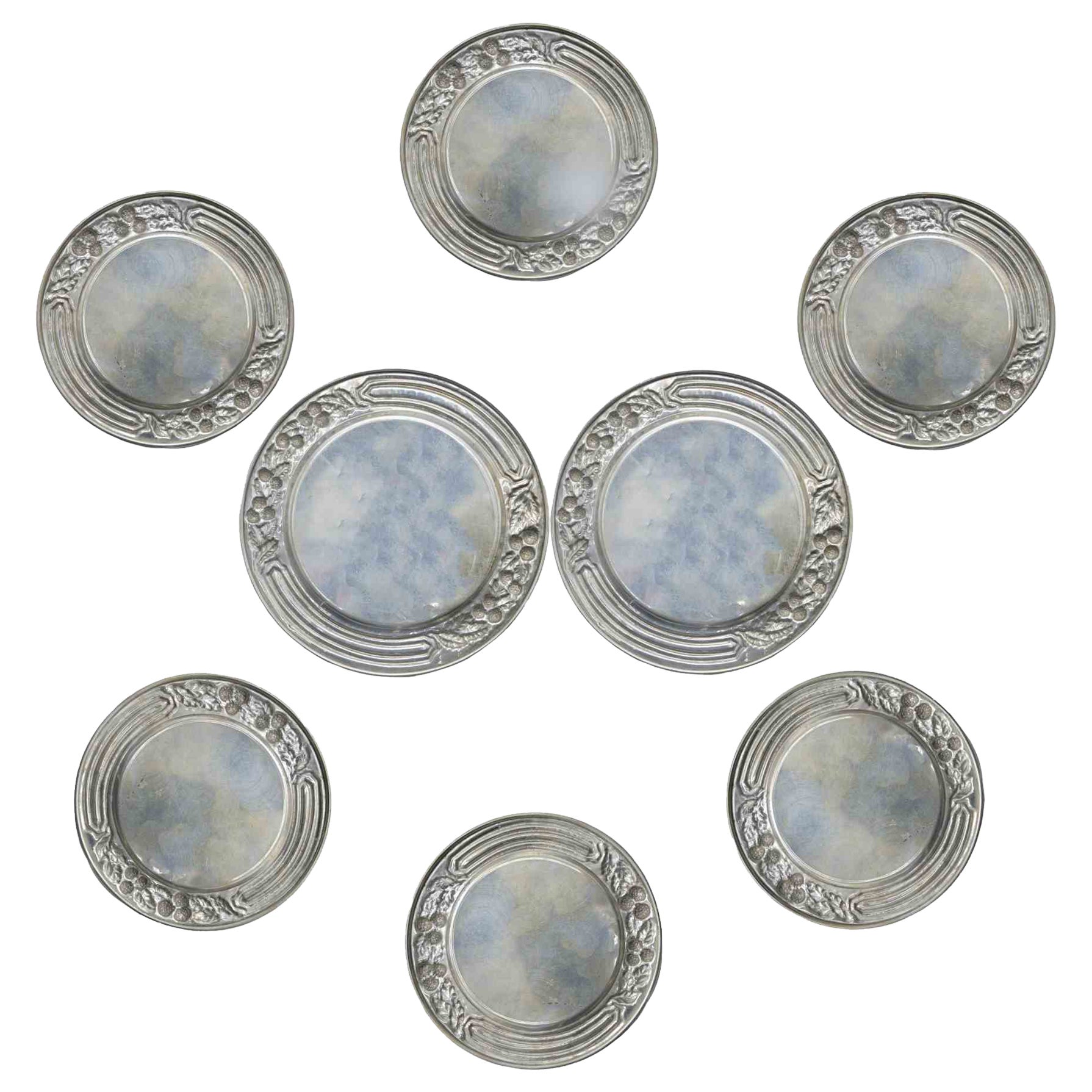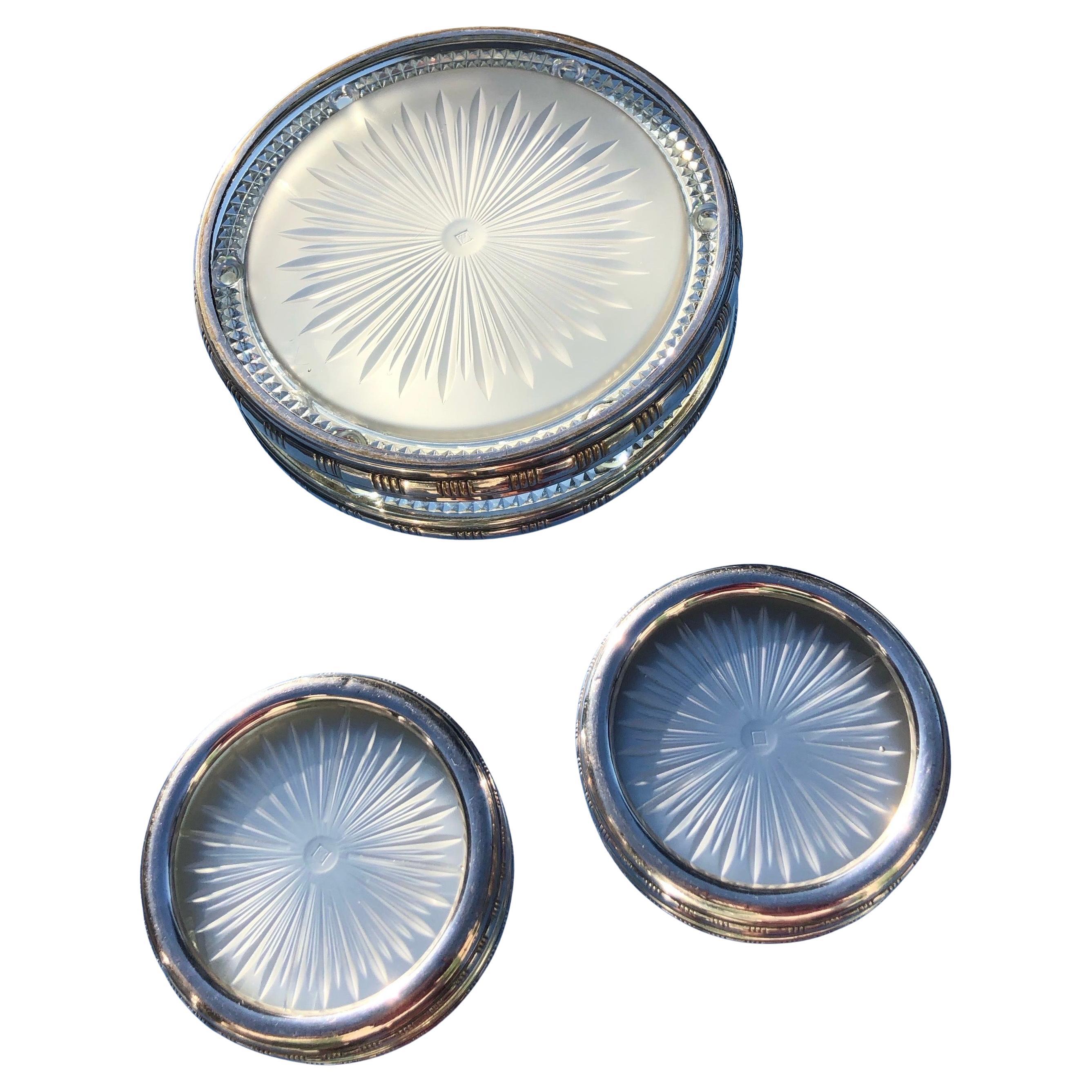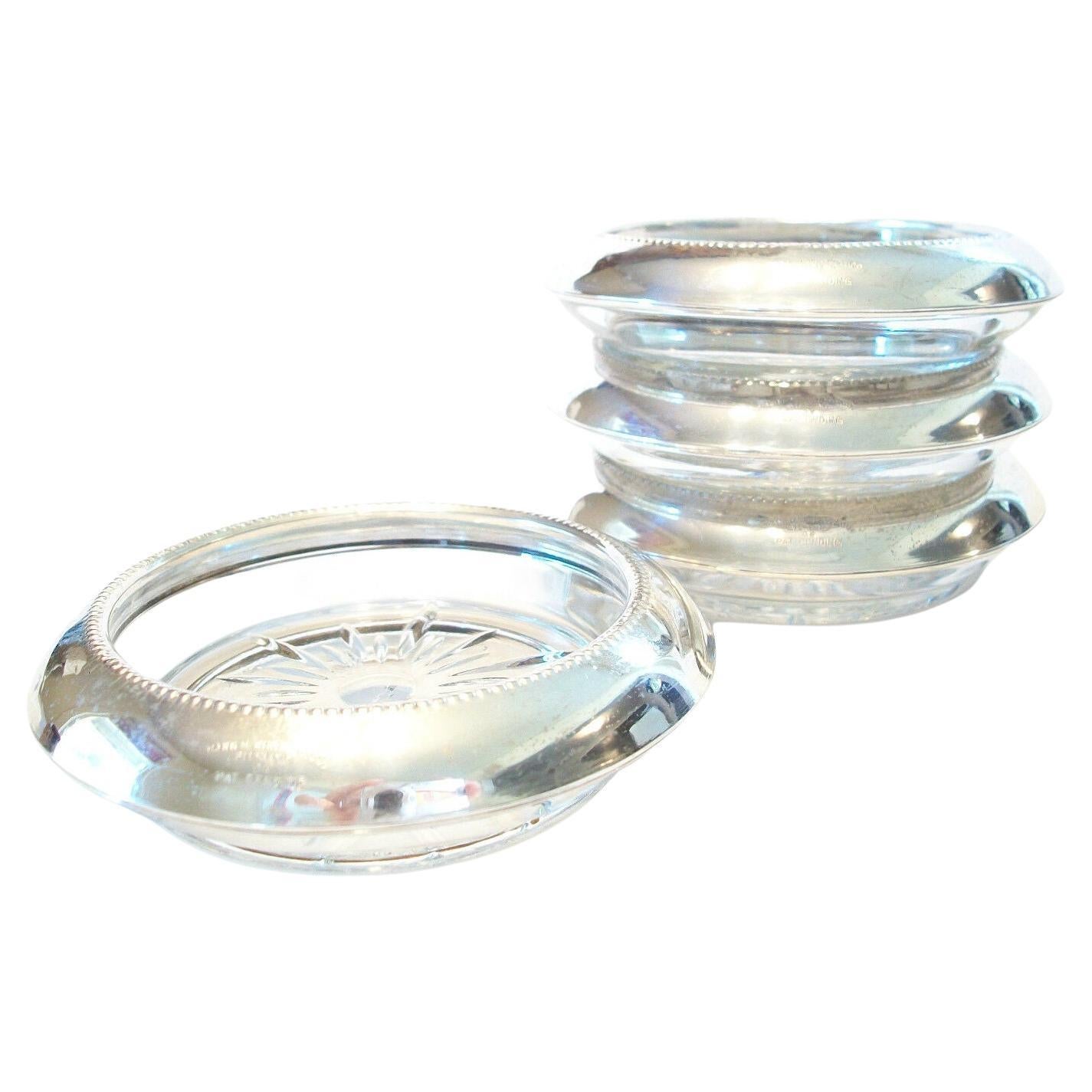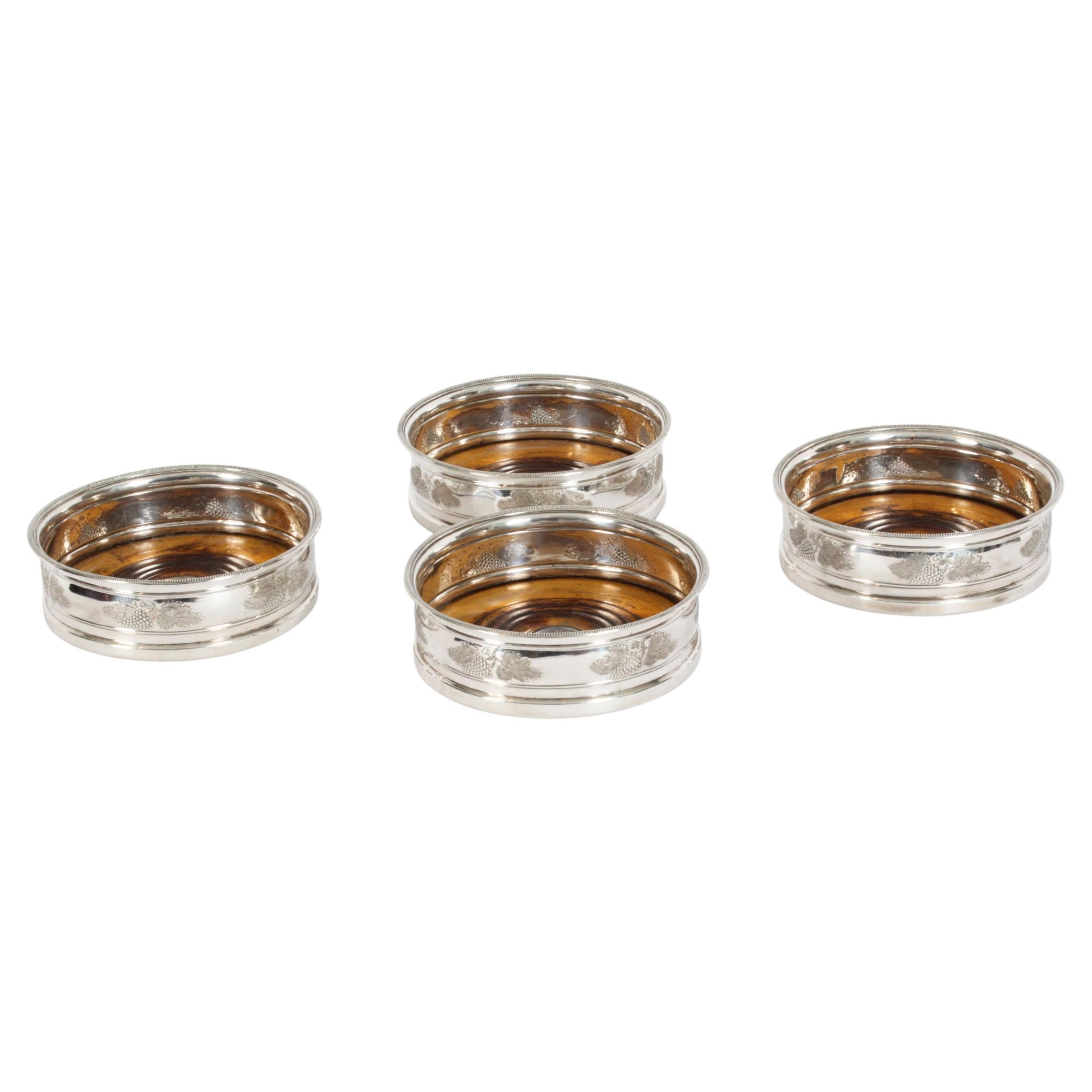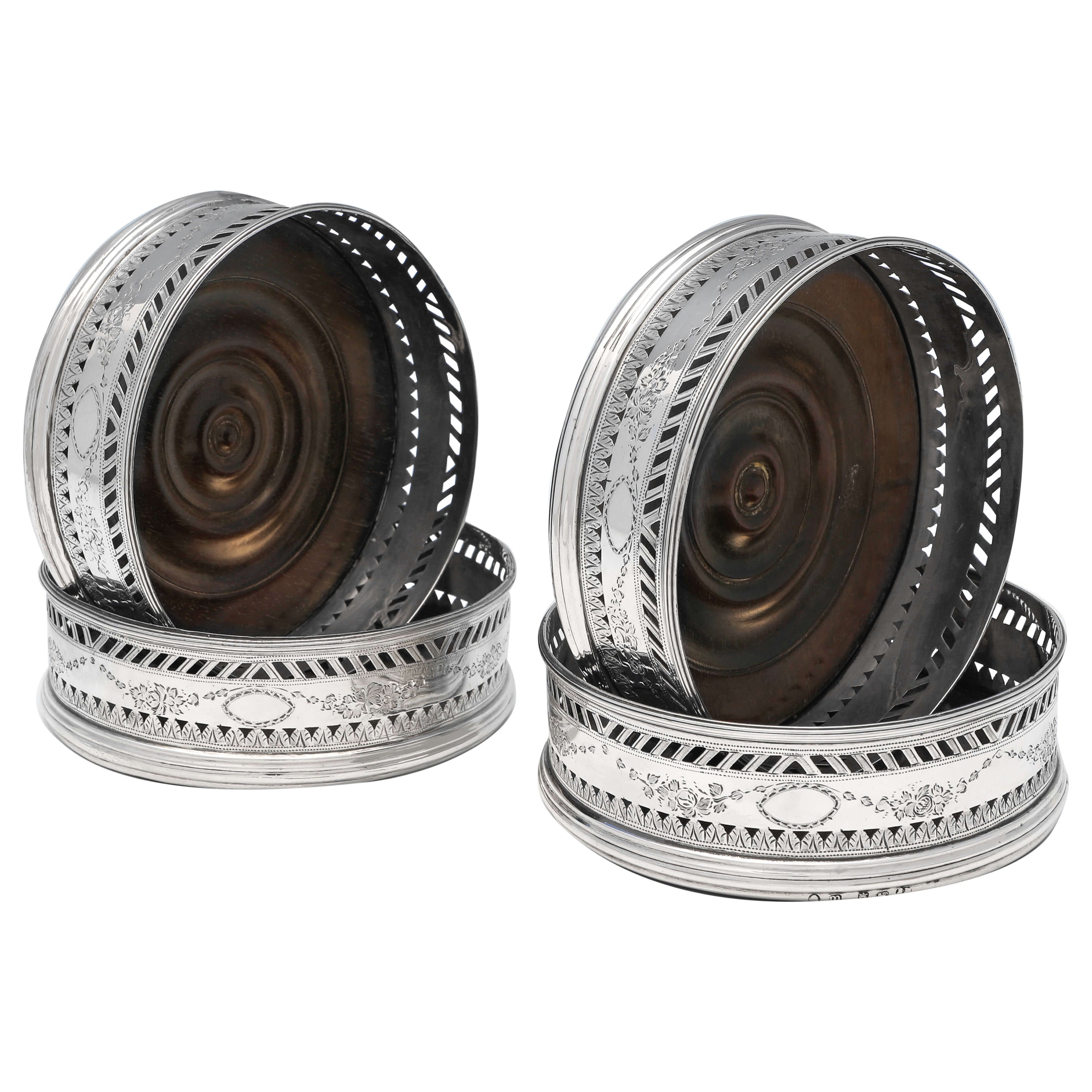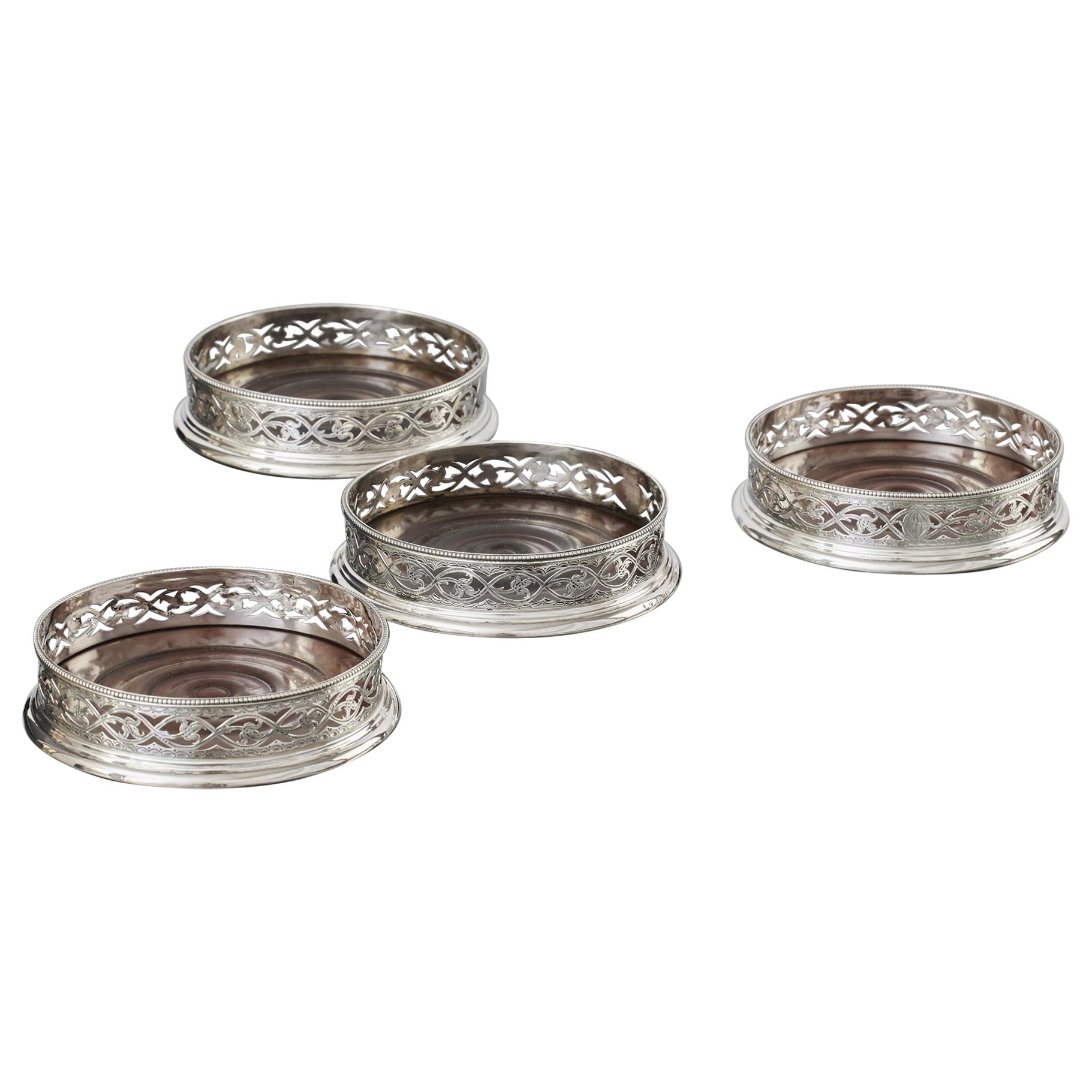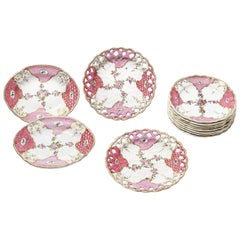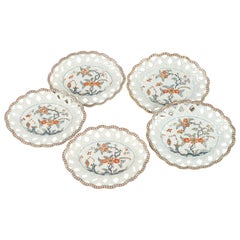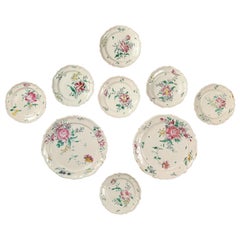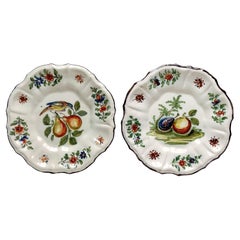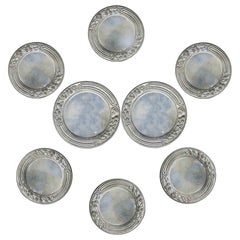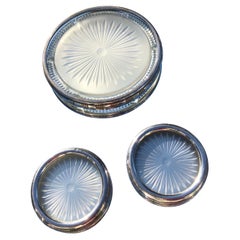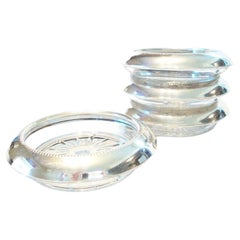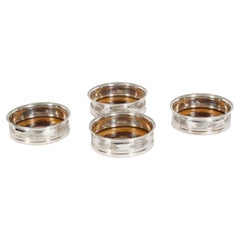Items Similar to 19th Century Italian Sterling Silver Glass and Wine Coasters, circa 1830
Video Loading
Want more images or videos?
Request additional images or videos from the seller
1 of 19
19th Century Italian Sterling Silver Glass and Wine Coasters, circa 1830
$10,184.22per set
£7,580.08per set
€8,500per set
CA$13,949.84per set
A$15,515.26per set
CHF 8,101.59per set
MX$188,804.24per set
NOK 103,469.64per set
SEK 97,036.27per set
DKK 64,707.53per set
Shipping
Retrieving quote...The 1stDibs Promise:
Authenticity Guarantee,
Money-Back Guarantee,
24-Hour Cancellation
About the Item
Twelve silver glass coasters and four silver wine coasters.
Silversmith Antonio Mantelli
Milan, circa 1830
They measure:
Glass coasters: 0.78 in high x 3.46 in diameter (2 cm x 8.8 cm)
Wine coasters: 0.86 in high x 5.24 in diameter (cm 2.2 e cm 13.3)
lb 1.86 (kg 0.84)
State of conservation: slight dents and defects due to use.
Each glass coaster or wine coaster has a circular shape with a vertical brim adorned with a continuous, perforated pattern of linked palmettes. The rim is everted and decorated with lance-shaped leaves interspersed with tiny beading. At the center of the support surface is a continuous crown of leaflets in relief arranged in a V-shape.
Each of the sixteen pieces bears three marks under the base:
1)“Forma eptagona. Globo col Zodiaco ed i setti (sic) Trioni.”
Heptagon form. Globe with the Zodiac and the seven Trioni (seven stars of the Ursa Major).
Mark of the Guarantee Office in use in the Napoleonic Kingdom of Italy from 1812 for works with a title of 800 thousandths.
2) "Aratro". Plow.
Mark of the Guarantee Office in use in the Napoleonic Kingdom of Italy from 1812.
3) "Dragon" and letters "AM".
Mark of the silversmith Antonio Mantelli, active between 1830 and 1839.
Reference bibliography:
V. DONAVER - R. DABBENE, Punzoni degli argentieri milanesi dell'800, Milano, 1985;
G. SAMBONET, Gli Argenti Milanesi, Milano, 1987.
- Creator:Antonio Mantelli (Maker)
- Dimensions:Height: 0.87 in (2.2 cm)Diameter: 5.24 in (13.3 cm)
- Sold As:Set of 16
- Style:Neoclassical (Of the Period)
- Materials and Techniques:Sterling Silver,Embossed
- Place of Origin:
- Period:
- Date of Manufacture:circa 1830
- Condition:Minor fading. Slight dents and defects due to use.
- Seller Location:Milano, IT
- Reference Number:1stDibs: LU4352215395912
About the Seller
4.3
Vetted Professional Seller
Every seller passes strict standards for authenticity and reliability
Established in 1860
1stDibs seller since 2018
21 sales on 1stDibs
Associations
International Confederation of Art and Antique Dealers' Associations
- ShippingRetrieving quote...Shipping from: Milano, Italy
- Return Policy
Authenticity Guarantee
In the unlikely event there’s an issue with an item’s authenticity, contact us within 1 year for a full refund. DetailsMoney-Back Guarantee
If your item is not as described, is damaged in transit, or does not arrive, contact us within 7 days for a full refund. Details24-Hour Cancellation
You have a 24-hour grace period in which to reconsider your purchase, with no questions asked.Vetted Professional Sellers
Our world-class sellers must adhere to strict standards for service and quality, maintaining the integrity of our listings.Price-Match Guarantee
If you find that a seller listed the same item for a lower price elsewhere, we’ll match it.Trusted Global Delivery
Our best-in-class carrier network provides specialized shipping options worldwide, including custom delivery.More From This Seller
View AllAncient Italian Maiolica Rose Dishes by Pasquale Rubati Milano, 1780 circa
By Pasquale Rubati
Located in Milano, IT
Assortment of 12 elements with polychrome and gold decoration
Pasquale Rubati Factory
Milan, circa 1770- 1790.
Two oval trays 10.62 in x 8.58 in (27 x 21.8 cm)
Two dishes with perforated brim diameter 10.43 in (26.5 cm)
Eight round dishes 9.37 in (23.8 cm)
lb 10.14 (kg 4.6)
State of conservation: very good, except for light chips with color drops at the edges, a greater one in a round dish.
This rare set of dishes has great decorative impact and confirms the undisputed artistic ability of Pasquale Rubati's productions during the period of his greatest success. It also attests to the taste of the great Milanese commissions of the eighteenth century.
Pasquale Rubati, a refined painter, opened his own factory in Milan in 1756, in competition with Felice Clerici...
Category
Antique 1770s Italian Rococo Ceramics
Materials
Maiolica
Ancient Maiolica Plates Pasquale Rubati, Milan Circa 1770-1780
By Pasquale Rubati
Located in Milano, IT
Five oval maiolica dishes with pierced edge
Manufacture of Pasquale Rubati
Milan, 1770-1780
Three small oval dishes 10.23 in x 7.67 in (26 cm x 19.5 cm)
Two large oval dishes 10.82 in x 8.85 in (27.5 x 22.5 cm)
lb 3.5 (kg 1.8)
State of conservation: intact
The five dishes of different sizes have an oval shape, a mixtilinear edge and a molded polylobed shape with a surface enriched with a relief weave motif extending to the brim and forming a perforated basket...
Category
Antique 1770s Italian Rococo Ceramics
Materials
Maiolica
Ancient Maiolica Dishes with flowers, Lombard Manufacture, 1770-1780 Circa
Located in Milano, IT
Assortment of dishes
Lombard manufacture
1770 – 1780 Circa
Maiolica polychrome decorated “a piccolo fuoco” (third fire).
Two large dishes: diameter 14.76 in (37.5 cm); weight 4.5...
Category
Antique 1770s Italian Rococo Ceramics
Materials
Maiolica
Two Small Italian Dishes Antonio Maria Coppellotti Manufacture, Lodi, Circa 1740
By Antonio Maria Coppellotti
Located in Milano, IT
Two small dishes
Antonio Maria Coppellotti Manufacture
Lodi, Circa 1740
High fire polychrome majolica
They measure: diameter 7.08 in(18 cm)
Weight: 0.37 lb (170 g)
State of conservat...
Category
Antique 1740s Italian Baroque Ceramics
Materials
Maiolica
Four Italian Ancient Dishes, Antonio Ferretti, Lodi, circa 1770-1780
By Antonio Ferretti
Located in Milano, IT
Assortment of 4 dishes with braided rim
Antonio Ferretti Manufacture
Lodi, circa 1770-1780
Maiolica polychrome decorated “a piccolo fuoco” (third fire).
Measures: 14 x 10 in (35.5 x 25.5 cm);
12.2 x 8.39 in (31 x 21.3 cm);
10.4 x 9.65 in (26.5 x 24.5 cm);
10.8 x 9.61 in (27.5 x 24.4 cm).
Weight: 4.4 lb (1.998 kg)
State of conservation: some chips due to use on the edges and on the parts in relief.
The four different dishes have a foot with a low lip from which extends a wide, flat, slanted rim resembling a basket weave. The small handles are painted green: they resemble wickerwork in the two oval dishes and take the form of a sinuous branch in the round ones.
The third fire decoration is inspired by the naturalistic floral botanical patterns on the ceramics produced by the Hannong family in Strasbourg. Here the pattern is defined by the rapidity and subtlety of the brushstrokes and the result is particularly tasteful, characterized by compositional intelligence and pictorial expertise.
A main corolla, either a wild or garden rose, is set slightly off center in each well. From this extends a thin stem holding a small secondary bud and there are small field florets dotting the composition to lend volume to the delicate bunch of flowers.
On the brim, small polychrome flowers add color to the weave, accompanied by lanceolate leaves of a very intense green.
There exist few and very rare examples for comparison with this morphology: a round plate - entirely consistent with those in question - has been dated to around 1775 (S. Levy, Maioliche settecentesche lombarde e venete, Milano 1962, tav. 200). Two other dishes with a basket rim, but with parallel striped brim decoration, were exhibited in the 1995 exhibition on Lodi ceramics; the attribution to the Lombard town near Milan is therefore almost exclusively derived from the decoration called "alla rosa contornata" or "alla vecchia Lodi" and constitutes one of the most popular decorations during the eighteenth century. (M. L. Gelmini, in Maioliche lodigiane del '700 (cat. mostra Lodi), Milano 1995, pp. 31 p. 162-163 nn. 181-182).
This decorative choice represented a strong point of the Lodi factory, which established itself thanks to the vivid nature of the colors made possible by the introduction of a new technique perfected by Paul Hannong in Strasbourg and which Antonio Ferretti introduced in Italy. This production process, called “piccolo fuoco” (third fire), allowed the use of a greater number of colors than in the past; in particular, the purple of Cassius, a red made from gold chloride, was introduced. Its use allowed for many more tones and shades, from pink to purple.
The Ferretti family had started their Maiolica manufacturing business in Lodi in 1725.
The forefather Simpliciano had started the business by purchasing an ancient furnace in 1725 and, indeed, we have evidence of the full activity of the furnaces from April of the same year (Novasconi-Ferrari-Corvi, 1964, p. 26 n. 4). Simpliciano had started a production of excellence also thanks to the ownership of clay quarries in Stradella, not far from Pavia. The production was so successful that in 1726 a decree of the Turin Chamber came to prohibit the importation of foreign ceramics, especially from Lodi, to protect internal production (G. Lise, La ceramica a Lodi, Lodi 1981, p. 59).
In its initial stages, the manufacture produced maolicas painted with the “a gran fuoco” (double fire) technique, often in turquoise monochrome, with ornamentation derived from compositional modules in vogue in Rouen in France. This was also thanks to the collaboration of painters like Giorgio Giacinto Rossetti, who placed his name on the best specimens next to the initials of the factory.
In 1748 Simpliciano made his will (Gelmini, 1995, p. 30) appointing his son Giuseppe Antonio (known as Antonio) as universal heir. After 1750, when Simpliciano passed away, Antonio was directly involved in the Maiolica factory, increasing its fortunes and achieving a reputation on a European level. Particularly important was the aforementioned introduction in 1760 of the innovative “a piccolo fuoco” (third fire) processing, which, expanding the ornamental repertoire with Saxon-inspired floral themes, could commercially compete with the German porcelains that had one of its most renowned offerings in the naturalistic Deutsche Blumen. Antonio Ferretti understood and promoted this technique and this decoration, proposing it in a fresher and more corrective version, less linked to botanical tables...
Category
Antique 1770s Italian Neoclassical Ceramics
Materials
Maiolica
Three Dishes, Antonio Maria Coppellotti Factory, Lodi, Italy, Circa 1745
By Antonio Maria Coppellotti
Located in Milano, IT
Pair of round dishes and a small oval tray
Antonio Maria Coppellotti factory
Lodi, circa 1745
High fire polychrome majolica
Dishes size: diameter 9.44 in, height 0.78 in (24 cm, 2 c...
Category
Antique 1740s Italian Rococo Delft and Faience
Materials
Maiolica
You May Also Like
Coasters Silver Set , Early 20th Century
Located in Roma, IT
Set of 8 silver coasters.
Two larger ones with a diameter of 14 cm. ( coaster) 6 small ones with a diameter of 14 cm (coasters)
Handmade vegetable decorations
Very good conditio...
Category
Early 20th Century European Centerpieces
Materials
Silver
$778 / set
Two French Wine coasters and a Trivet thick glass and silver plate circa 1930
Located in Crespières, FR
These three table accessories are made of thick glass made by a famous French company part of Holophane France between the 1920’s and 1940’s, making decorative items.
The maker was...
Category
Vintage 1930s French Art Deco Tableware
Materials
Silver Plate, Brass
FRANK M. WHITING - 4 Sterling Silver & Glass Coasters - U.S. - Mid 20th Century
By Frank M. Whiting & Company
Located in Chatham, ON
FRANK M. WHITING & CO. - Set of four vintage pressed glass coasters with sterling silver rims - stack-able - each signed - United States - mid 20th century.
Excellent vintage condit...
Category
Mid-20th Century American American Classical Barware
Materials
Sterling Silver
Antique Set 4 Regency Period Old Sheffield Plate Wine Coasters 19th Century
Located in London, GB
This is a very attractive set of 4 of antique George III Old Sheffield plate wine bottle coasters, circa 1820 in date.
The set are of circular form with a beaded edge decorated w...
Category
Antique 1820s English Regency Sheffield and Silverplate
Materials
Sheffield Plate
Neoclassical Set of 4 Antique Sterling Silver Wine Coasters, London, 1787
Located in London, London
Hallmarked in London in 1787, this striking set of four George III, Antique Sterling Silver Wine Coasters, feature pierced and eng...
Category
Antique 1780s English Neoclassical Sterling Silver
Materials
Sterling Silver
Matched set of four early-George-III pierced silver wine coasters
By William Plummer
Located in London, GB
A particularly pretty matched set of four Georgian silver coasters was made by William Plummer in the late 18th century. The body of each wine coaster features beautifully pierced an...
Category
Antique Late 18th Century British George III Tableware
Materials
Sterling Silver
More Ways To Browse
Crown Sterling
Dragon Sterling Silver
Antique Silver Wine Coaster
Sterling Silver Coasters
Sterling Wine Coaster
Antique Sterling Wine Coaster
Antique Plow
Sterling Silver Bell
Sterling Silver With Grapes
French Silver Vermeil
Spooner Glass Victorian
Acorn Sterling Silver
International Sterling Silver Patterns
Silver Sea Shells
Lion Rampant
Tiffany Silver Service
Antique Coronet
Unusual Sterling Silver Pieces
